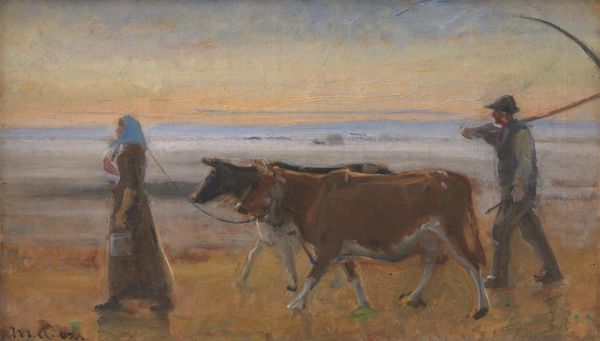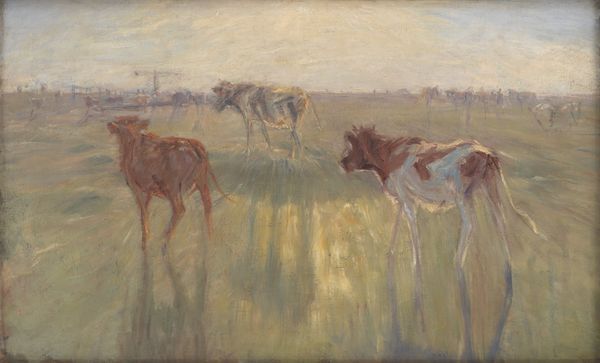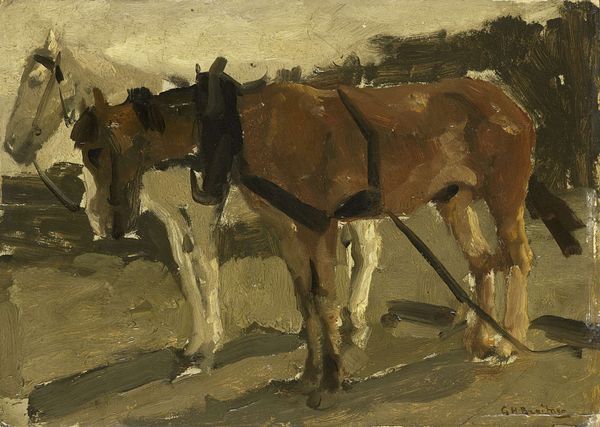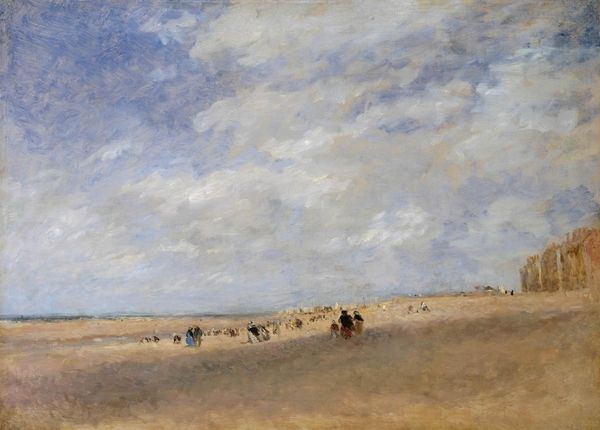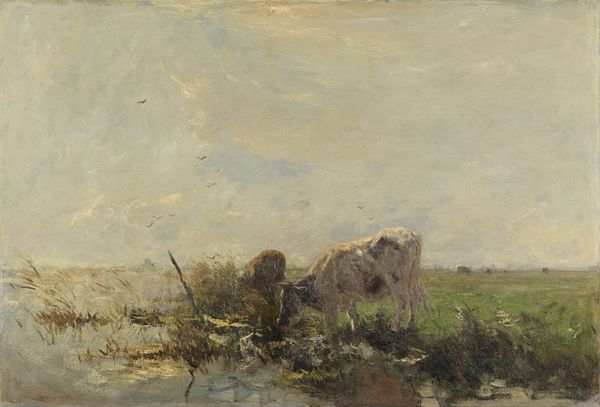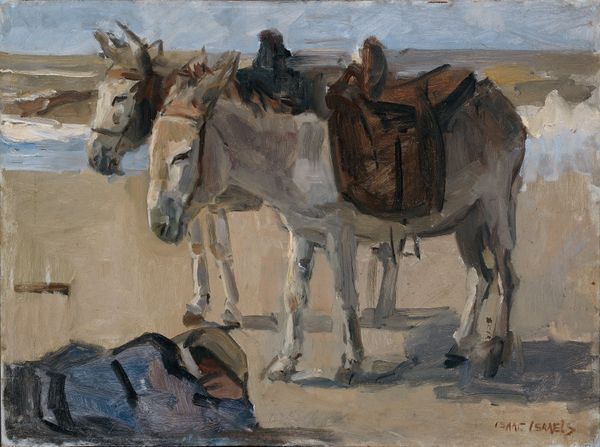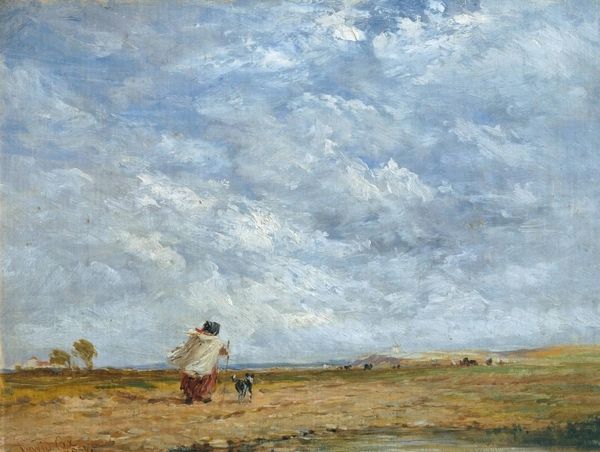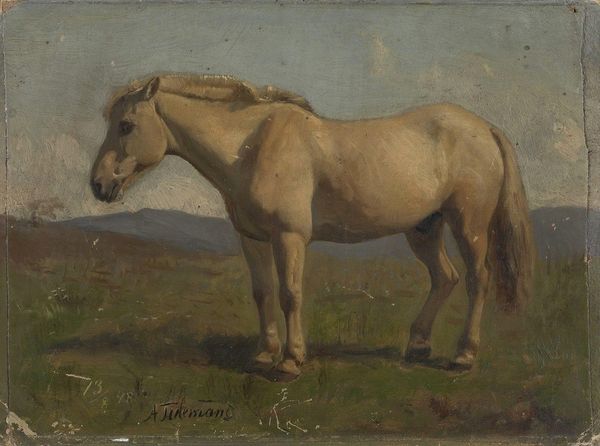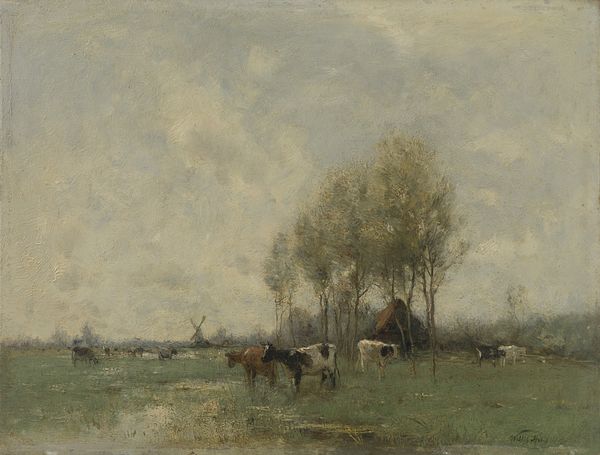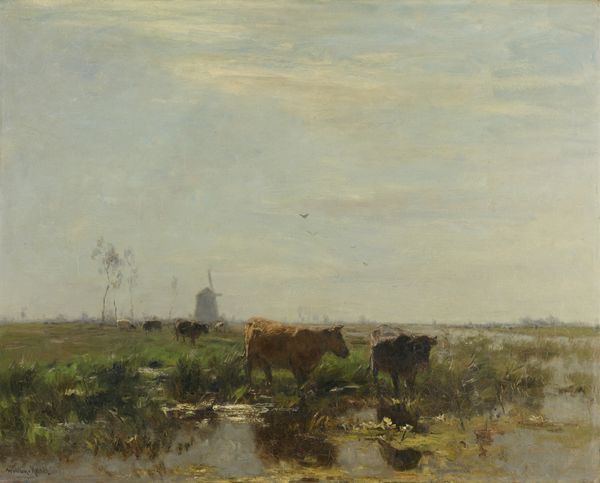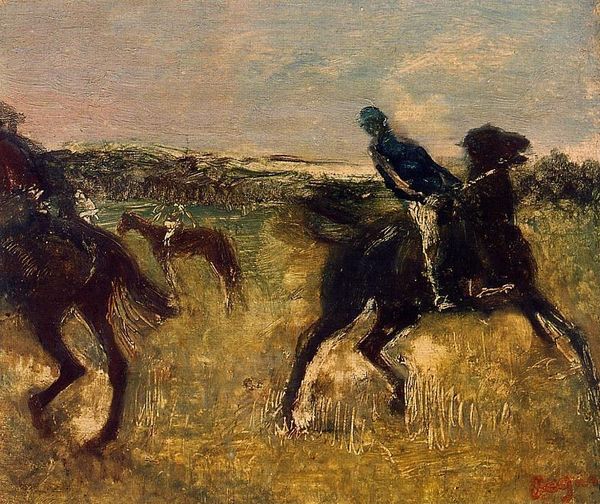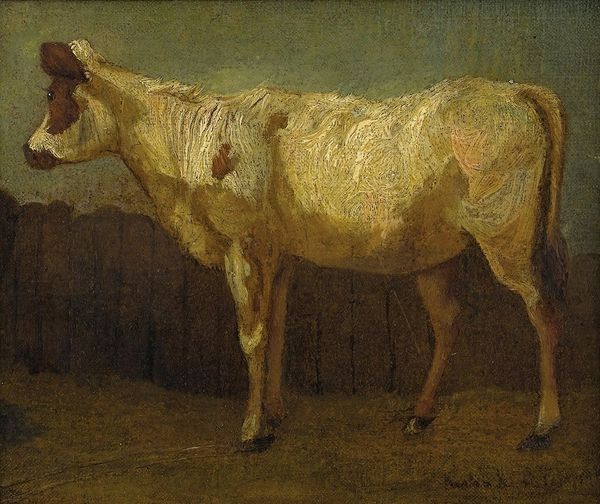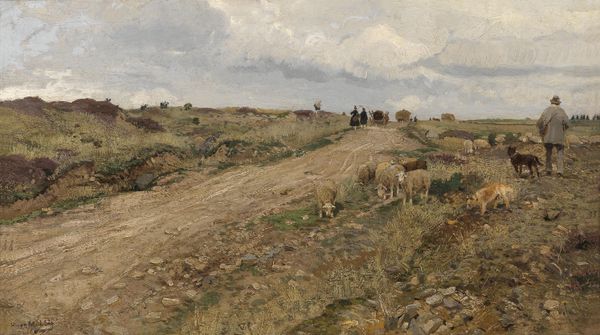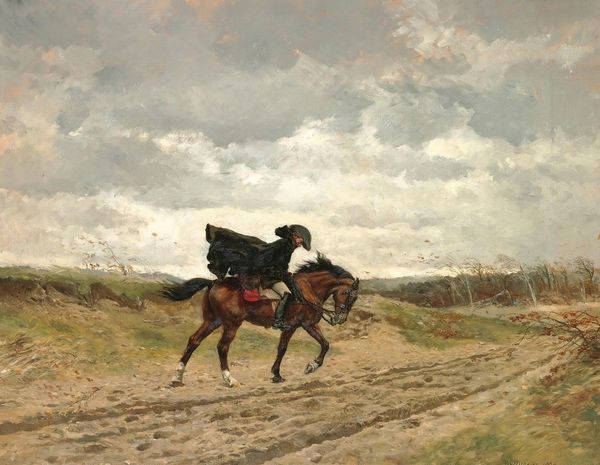
painting, oil-paint
#
painting
#
impressionism
#
oil-paint
#
landscape
#
oil painting
#
genre-painting
#
realism
Dimensions: overall: 18.9 x 32.9 cm (7 7/16 x 12 15/16 in.) framed: 25.6 x 40.6 x 3.2 cm (10 1/16 x 16 x 1 1/4 in.)
Copyright: National Gallery of Art: CC0 1.0
Curator: This lovely painting is by Stanislas Lépine and is titled "A Plow Horse in a Field." He worked on it sometime between 1870 and 1874 using oil paints. Editor: My first thought? Endurance. There’s a certain starkness, a kind of loneliness to the composition that really amplifies the sense of labor, almost Sisyphean labor if you really think about it. Curator: It's fascinating how a single animal can embody that, isn't it? The horse, as a symbol, has always represented strength and hard work, and in agricultural societies, it carried an even heavier cultural weight. Do you see any reflection on social themes in the painter's decision to show such an ordinary scene? Editor: Absolutely! Especially knowing it's post-industrial revolution. There’s a hint of nostalgia maybe, a longing for a simpler, agrarian past. Plus, Lépine focuses almost exclusively on landscape paintings. It can be read, too, as resilience against all that societal change. Curator: Lépine worked around the period when Realism transitioned into Impressionism. It makes sense that he depicted agricultural scenery since he often returned to depicting Montmartre or the banks of the Seine. Editor: Interesting to put Lépine into the context of his time like that. It seems the scene might be less about some glorification of a traditional rural way of life than one single farm animal actually. See the angle and dynamism in its movements? Maybe it really does convey a certain heroic act, and maybe even self-sacrifice and the ability to move forward through challenging conditions. Curator: Yes, his style retains elements of Realism in the honest portrayal of the horse and the scene. In Western symbology, the horse carries various positive traits, such as virility, power, or victory, while also possessing certain negative ones, such as arrogance or lack of restraint. Which way did Lépine's composition influence those ideas for you, if at all? Editor: Oh, good question! Here, the horse isn’t heroic in some boastful, obvious way. It’s humble strength. And frankly? That’s often the most inspiring kind. What starts as just an impressionist blur, for me at least, evolves into something more. It makes me grateful and maybe gives you that sense, too, of gratitude. Curator: A perfect culmination. Let's carry that sentiment with us, shall we?
Comments
No comments
Be the first to comment and join the conversation on the ultimate creative platform.
